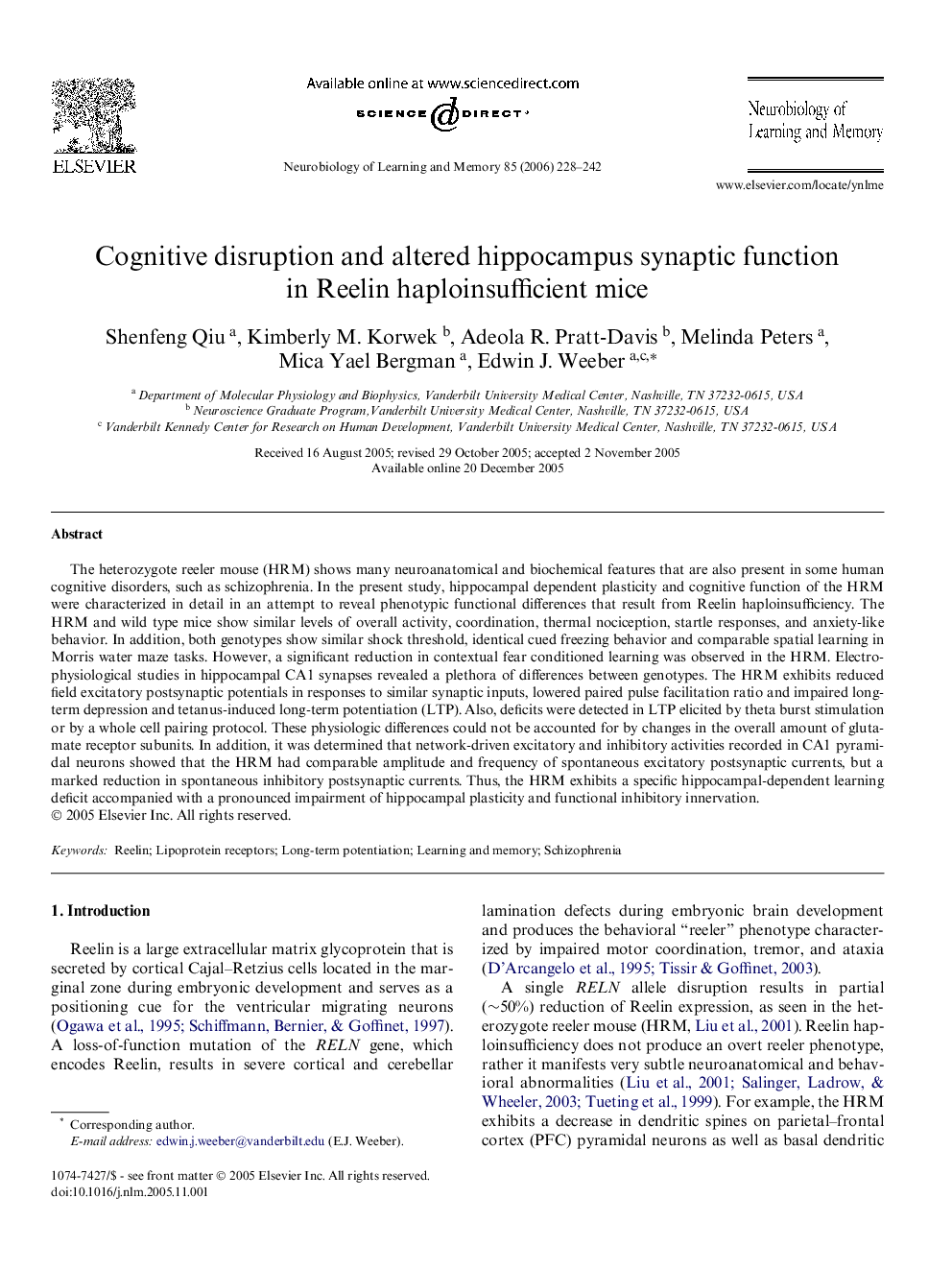| Article ID | Journal | Published Year | Pages | File Type |
|---|---|---|---|---|
| 937269 | Neurobiology of Learning and Memory | 2006 | 15 Pages |
The heterozygote reeler mouse (HRM) shows many neuroanatomical and biochemical features that are also present in some human cognitive disorders, such as schizophrenia. In the present study, hippocampal dependent plasticity and cognitive function of the HRM were characterized in detail in an attempt to reveal phenotypic functional differences that result from Reelin haploinsufficiency. The HRM and wild type mice show similar levels of overall activity, coordination, thermal nociception, startle responses, and anxiety-like behavior. In addition, both genotypes show similar shock threshold, identical cued freezing behavior and comparable spatial learning in Morris water maze tasks. However, a significant reduction in contextual fear conditioned learning was observed in the HRM. Electrophysiological studies in hippocampal CA1 synapses revealed a plethora of differences between genotypes. The HRM exhibits reduced field excitatory postsynaptic potentials in responses to similar synaptic inputs, lowered paired pulse facilitation ratio and impaired long-term depression and tetanus-induced long-term potentiation (LTP). Also, deficits were detected in LTP elicited by theta burst stimulation or by a whole cell pairing protocol. These physiologic differences could not be accounted for by changes in the overall amount of glutamate receptor subunits. In addition, it was determined that network-driven excitatory and inhibitory activities recorded in CA1 pyramidal neurons showed that the HRM had comparable amplitude and frequency of spontaneous excitatory postsynaptic currents, but a marked reduction in spontaneous inhibitory postsynaptic currents. Thus, the HRM exhibits a specific hippocampal-dependent learning deficit accompanied with a pronounced impairment of hippocampal plasticity and functional inhibitory innervation.
